![]() AGRC Projects
AGRC Projects
Current Projects
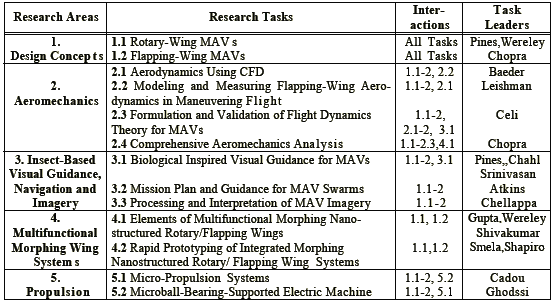
Blade Controlled-Disturbance Interaction Concept: New approach to mimic Blade Vortex Interaction
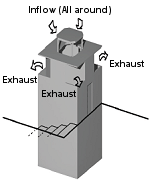 |
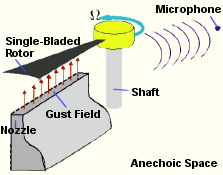 |
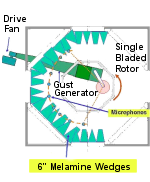 |
Anechoic Hover Chamber |
Blade interacts with flow |
BCDI installed inside Anechoic Chamber |
2000 NRTC Grant Tasks
- Efficient Low Noise Rotors
- BVI Noise Measurement and Validation For Maneuvering Flight
This effort will measure the rotor blade noise of a helicopter in maneuvering, accelerating and decelerating flight, and then develop an acoustic model that can predict rotor noise - Rotor Aeroacoustics During Maneuvers
This research will define the fundamental connections between rotor aeroacoustics and rotor dynamics, flight dynamics and pilot behavior - Minimum Noise Radiation Design Through Blade-Controlled Disturbance-Interaction
(B-CD-I) Theory/Experiments
A new experimental model and facility will be developed to assess the influence of rotor blade design on the unsteady aerodynamic response and acoustics of rotors. Unique design concepts will be studied as a means to reduce BVI noise. The complex BVI problem will be assessed using the simplified B-CD-I approach. - Passive Noise Reduction Blade Design Using CFD
CFD analysis will be used to examine innovative concepts to reduce BVI noise. - Active Fluidic Control of Blade-Vortex Interaction Noise
For this project, CFD analysis will evaluate the feasibility of using various micro-fluidic devices near the leading edge of the rotor blade to control the flow over the blade and thereby reduce BVI noise. The most promising fluidic devices will then be evaluated in wind tunnel tests. - Modeling of Non-Linear Unsteady Aerodynamics
This task will develop a non-linear unsteady aerodynamic model for airfoils and rotors that can be used to minimize noise radiation, loads, and vibration levels. - Experimental and Numerical Research on Rotor Wakes and Tip Vortices
This program will measure tip vortices, then develop more accurate analytic models of the vortices and the overall wake structure generated by the rotating blades in hover and forward flight. This improved understanding will help to design rotors with better performance and lower noise levels.
Affordability
- Innovative Design, Fundamental Analyses, and Integration of Micro Rotorcraft
This research into improved miniature rotorcraft will result in a fundamental understanding of the physics, system scaling, and integration issues involved.
Advanced micro rotorcraft will be developed and demonstrated, including
autonomous flights.
Low-Vibration Dynamic Systems
- Fundamental Understanding of Vibration Mechanisms in Level and Maneuvering Flight
This effort will enhance the Maryland’s analysis capability and advance the state-of-the-art of predicting vibrations and loads in level and maneuvering flight for current and advanced rotors. - High-Fidelity CFD Loads for Structural Coupling
This research should result in significant advances in the ability to predict aerodynamic loads and vibrations, using CFD to analyze the induced velocity field and blade dynamics. The use of trailing-edge flaps will also be modeled to determine their suitability for low-vibration rotor systems.
Advanced Drivetrains
- Adaptive Driveshafts/Struts for Noise and Vibration Reduction, and Damage Mitigation
This project will model transmitted vibrations from helicopter gearbox/drivetrain components and then design, fabricate and test composite drive shafts with embedded shape memory inserts to reduce noise and vibration from the transmission and drivetrain. - Transmission Design for Robust Diagnostics and Prognostics
This task will explore the effects of advanced transmission gear designs and geometries to enhance incipient damage and fault detection.
Smart and Composite Structures
- Semi-Active Damping Control of Rotor Systems
For this effort, the AGRC will investigate semi-active actuators based on smart materials to augment the aeromechanical stability of bearingless rotor systems. - More about Smart Structures
Digital-Optical Integrated Flight Controls
- Advanced Rotorcraft Flight Control Systems
This is a study of flight control systems and rotor control systems and the relevant effects on flight dynamics and rotor dynamics.
VTOL Air Traffic Control Systems
- Airspace Integration and Flight Path Management to Maximize Throughput and Minimize Noise Exposure Surrounding Vertiports
Airport throughput could be greatly increased by using vertical take-off and landing (VTOL) aircraft for flights of less than 450 miles. This project will design an intelligent software architecture to maximize overall throughput and minimize noise at congested airports. System performance and airport-specific VTOL impact will also be characterized.
Active Vibration Suppression with Smart Actuators
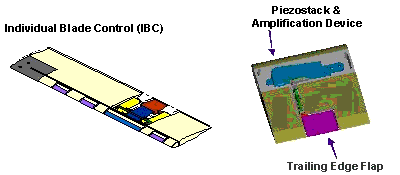
![]()
AGRC Facilities | Technology Transfers | Example 1 | Example 2 | Example 3
